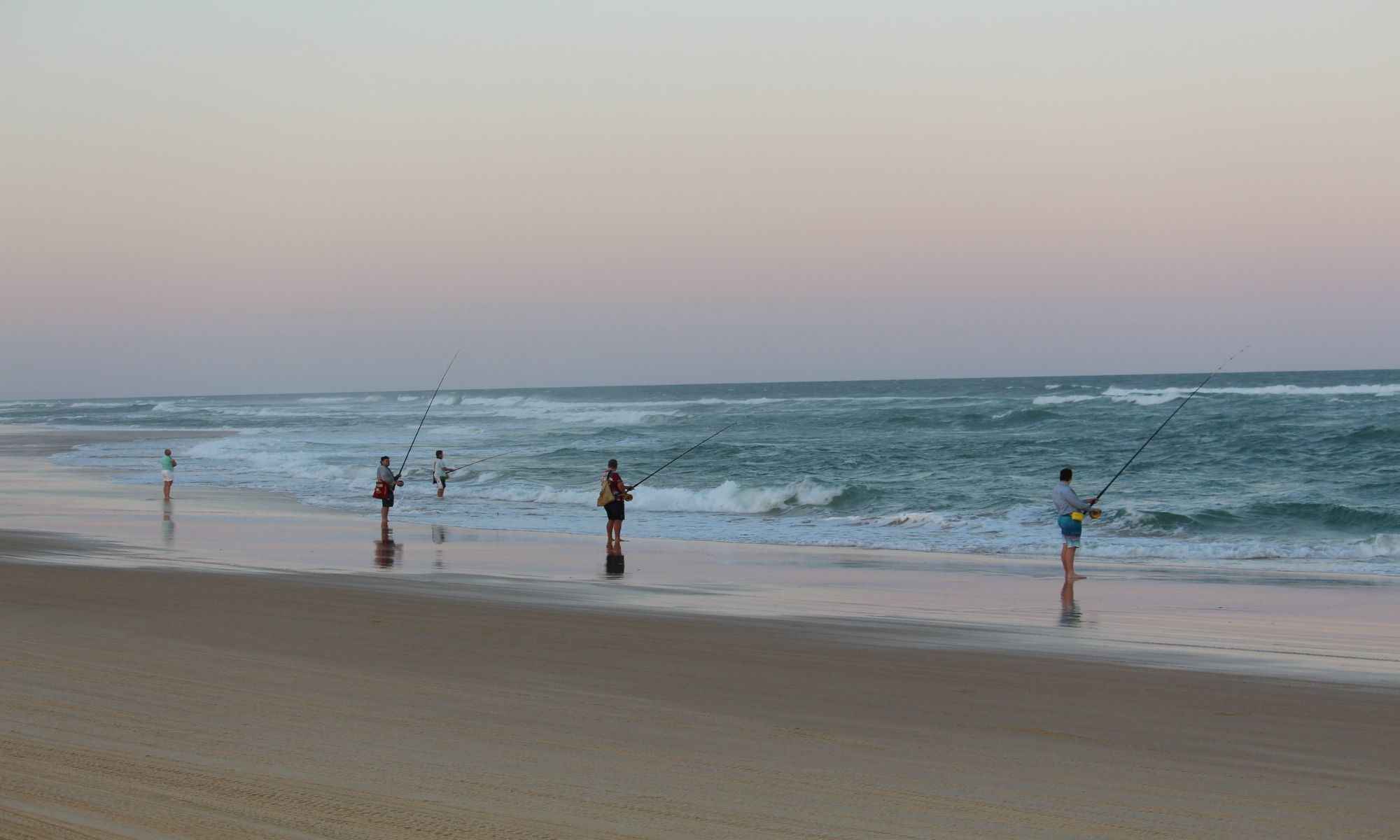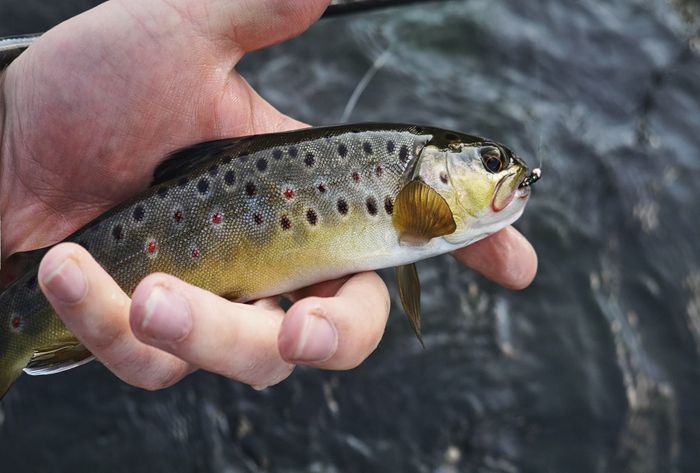Fall Fishing from the Shore: 4 Fish Species to Target
Fall is an exciting time to fish. Know the best ones to catch during this season through our guide.

Fishing during fall is known to be a very productive time for most fish, as the cooler temperatures draw them out to start feeding in preparation for winter. However, there are four fish species you should target when fishing from the shore, and we've listed them down below.
Before we talk about the fish you should be targeting, let's find out what makes autumn a great time for angling.
Less Work, More Prey
When autumn comes, it brings in cooler temperatures which likewise cause the water temperatures to drop. This change in temperature signals baitfish to move towards shallow water to feed, which in turn, prompts predatory fish to follow them.

Although you’re fishing from the shore, you’ll still want to cast out into deeper waters, at least that which you can reach. When selecting your spot on the banks, try to find one with deep roll-offs. Shallow flats adjacent to creek bends in reservoirs are a good bet as well, as baitfish often like to school in these areas.
When fishing during the fall, you’ll want to choose larger baits. During this time, the fish are actively feeding to store up for the winter. However, the cooler water temperatures also give them less metabolism and energy to move. To maximize their spent energy, predators in the water would rather go after a single big meal as opposed to chasing down a bunch of small baitfish. Doing so means they'll hunt and feed less, meaning they essentially do less work for more prey.
Therefore, a larger bait will also mean a slower moving one – at least to the predatory fish. During the fall, most of the baitfish are larger than usual – bluegill and shad, for example, will have matured into juveniles, making them an ideal catch for predators.
4 Fish Species to Target During Fall
Now that we’ve figured out what makes fall fishing a great season for angling, let’s take a look at four fish species you should target on your next run.
Black Bass
During the fall, black bass like largemouths and smallmouths head toward the shallows to feed. With the hot summer days winding down, the temperatures begin to get cooler outside and in the water. The gradual change in seasons gives rise to fish that are more actively feeding during this time of the year to stock up for the winter. Fishing during the middle of the day is your best bet when the sun is at its peak. The aggressiveness of fish to eat is an advantage to anglers and can open up a wealth of opportunities to land some trophies.
During this time, shad and other forage fish are more active as well, schooling together and searching for plankton and other morsels. These fish serve as prey for the black bass and locating them is key to a successful fishing trip. Following and locating these schooling baitfish will essentially lead you to your target species. For when there is prey, there are predators.

Shad often congregate in coves, creeks, ledges, and weedbeds. Flats with cover are likewise one of their favorite habitats. Rivers, although not too popular, also offer some fall fishing, but only cast your line in if you see some schooling baitfish.
Now, it then becomes logical to use shad-imitating lures like soft-plastic swimbaits and crankbaits, which are particularly effective for bass during the fall. This is especially true when rigged on a jighead or a weedless hook for an easier retrieve in shallower water. You can likewise try spinnerbaits and buzz baits for easy pickings.
Walleye
While most anglers will seek walleye near structures, a fair share of them congregate in shallow waters that are covered by weeds. Don't go poking around in dead or dying brush though – you'll want to stick to areas with living, green weeds. You’ll typically find some action at depths of around 6 to 15 feet, usually near ledges or drop-offs. These shoreline weedbeds attract juvenile baitfish such as panfish, yellow perch, and bullhead as well.
Plastic softbaits are preferred in thick cover and weedbeds, especially since actively feeding walleyes are lying in wait to pounce on prey. You’ll want to cast towards crevices and cracks in the weeds, let the bait slowly drift to the bottom, and finish up with a slow and steady retrieve.
Some anglers prefer to fish for walleye at night in areas such as creek mouths where there is water pushing around the baitfish. Alternatively, flats are also ideal because walleye are just cruising around looking for meals.
Brown Trout

Brown trout prefer water with plenty of oxygen, and autumn presents the perfect conditions for these fish. It’s no secret that trout love cool and clean waters, so with fall coming in, the trout are going to be biting while they begin their journey to their spawning grounds.
However, waters are usually clearer in the fall which causes trout to become warier. It would be wise to switch to a low-visibility line and to wear clothing that camouflages you with your surroundings. Try to conceal yourself behind cover on the bank to keep a low profile and staying near shaded areas would help.
Always be ready to spot some big hungry brown trout that are looking for a big meal. One of the things these fish are looking for is the October caddis, which is a large bug that draws trout to the surface. Minnows, if allowed in your area, is an effective bait to use against big browns in lakes as well. Try working it just off the bottom on a 24 to 36-inch fluorocarbon leader and an egg sinker.
On the other hand, trout that typically dwell in streams likewise head to shallow waters to feed, looking for insects that are landing in the water such as grasshoppers, ladybugs, beetles, and ants. You can expect insect hatches to be fewer and the bugs a little smaller. Mayflies and midges are also typical during autumn, so you’ll want to use flies or crankbaits that look like bugs. Spinners in natural colors are also an autumn favorite for brown trout.
Catfish
Catfish, whether channels or flatheads, are a popular favorite to catch during autumn and although they prefer deeper water, it’s not unusual for them to drift towards the shore to feed. Try setting your bait around one or two feet beneath a bobber and cast it out to around six to eight feet deep water. Refrain from using blood or stink bait since these don't work so well in colder temperatures. Instead, try dead baits like shad or nightcrawlers to reel in catfish from the shore.
Fishing from the shore at night for catfish could be productive, although it tends to be a waiting game. Simply cast out your line, anchor your rig down on the bank, let it free-spool, and wait for a bite.
A great bank-fishing spot is below river dams, where allowed, and you'll need a weighted rig. You'll want to cast toward the dam, let the rig sink, wait for 15 minutes, lift your rod tip high to let the current bring your bait downstream, then drop it again to the bottom.
Now that you’ve got some target species lined up, the only thing left is to get your rig together and head on out! We hope you got some useful tips for fall fishing from the shore.




